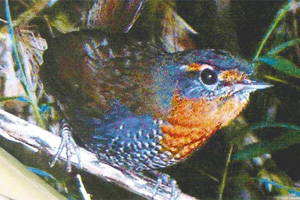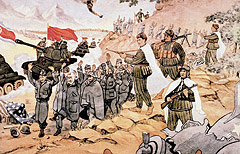As we have already explained, various agents exist that perturb natural ecosystems, such as the climate, storms, and others. But man continues to be the principal factor responsible for these changes.
In Chile, native forests are one of the ecosytems that have suffered from a high degree of fragmentation. This intervention can be defined as the transformation of a continuous forest into many small and isolated units, whose extension is much smaller than that of the original forest.
The impact of human activities on the history of Chilean forests can be identified from the 15th century on, in three phases:
– Colonization phase: development between the 15 th and the 19 th centuries. In the beginning, there were two zones in which native forests were degraded. In the south of the region currently known as Biobio, the forests were principally affected by fire (as a result of the Arauco War). Meanwhile, in the zone that corresponds to the present-day Metropolitan region, this phase was principally characterized by an intense extraction of wood for construction and logs, and by the burning of forests for agriculture and domestic animal pasturing (principally cows).
– Selective exploitation phase: period between the second half of the 19 th century and the first half of the 20th century. The usage of native forests was based on selective cutting, that is, the best specimens of species such as the Patagonian Cypress, Araucarias and the Pilgerodendron (Pilgerodendron uviferum) were cut down. This caused the impoverishment and deterioration of the forests in the central valley and the mountain range zones in the central and southern regions of the country.
– Industrial phase: since 1950 up until today, this phase has been characterized by greater levels of exploitation and destruction of native forest than in the two previous phases. In this stage, the forestry industry based itself on the cultivation of exotic trees, such as pine and eucalyptus.
Currently, the surface area of pine plantations is close to two million hectares, distributed in the central and southern regions of Chile. These plantations are those that have the greatest surface area in the world.
Fragmented forests in Chile
There are two significant examples of fragmented forests produced by human intervention:
– The Ruil Forest: it is located in the coastal mountain range in the Maule region. Since the end of the 19th century, this forest has suffered from an intense deforestation process. The predominating tree species is the Ruil (Nothofagus allessandri), although other species also grow there, such as the Hualo (Nothofagus glauca), the Peumo (Cryptocarya alba), the Olivillo (Aextoxicon punctatum) and the Chilean Hazel (Gevuina avellana). However, as a result of deforestation, the landscape now resembles a mosaic formed by small fragments of native forest and large extensions of Radiata Pine (Pinus radiata) plantations that are the majority.
Also, the dominance of fragments produces a greater edge effect that manifests itself in microclimatic changes and in the successful colonization and establishment of pines in the interior of the native forest fragments. Also, it is said that if deforestation continues (it is estimated at a rate of 47,3 hectares per year), this forest and all of the biodiversity that inhabits it will inevitably disappear in the next years.
– The Valdivian Forest of Chiloe: although few hectares are left, there still exist some patches of Valdivian forest in the archipelago of Chiloe. These are characterized by the presence of trees such as Coihue (Nothofagus dombeyi), Winter’s Bark (Drimys winteri), Tineo (Weinmannia sp.) and some species of the Myrtaceae family.
As a result, in the last years some studies have been done in order to evaluate the effects of the size of fragmentation, above all on the diversity of birds associated with these forests. This is because some species such as the Chucao (Scelorchilus rubecula), the Magellanic Tapaculo (Scytalopus magellanicus fuscus) and the Ochre-flanked Tapaculo (Eugralla paradoxa) are especially representative of native forest and avoid going deep into the anthropogenic matrix formed by plantations and open spaces.








 Termina la Guerra de Corea
Termina la Guerra de Corea